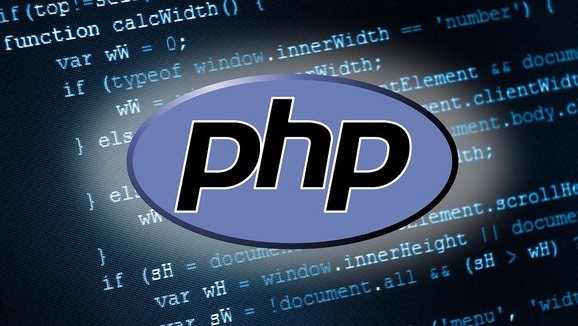 Backend Development
Backend Development
 PHP Tutorial
PHP Tutorial
 How to create a PHP function that accepts a callback and arguments for it?
How to create a PHP function that accepts a callback and arguments for it?
How to create a PHP function that accepts a callback and arguments for it?
Jul 07, 2025 am 02:50 AMTo create a PHP function that accepts callbacks and their parameters, 1. Use call_user_func_array() to call dynamic callbacks and pass parameter arrays; 2. Verify whether the callback is legal through is_callable() to avoid invalid calls; 3. Support closures, object methods and static methods to improve flexibility. For example: define the run_callback($callback, $args) function, first check the validity of the callback, and then use call_user_func_array() to execute, support multiple calling forms such as functions, methods and closures, and can pass in parameter arrays to ensure that the system is scalable and safe.

Sure, here's how to create a PHP function that accepts a callback and its arguments.

Let's say you want a reusable function that runs any callback someone passes in — maybe for flexibility or triggering different behaviors depending on the situation. The trick is making sure your function can accept both the callback and any arguments it needs.

1. Use call_user_func_array() for dynamic callbacks
PHP has a built-in function called call_user_func_array() which lets you call a callback with an array of arguments. It's perfect when you don't know ahead of time what the callback will be or how many arguments it needs.
Here's a basic structure:

function run_callback($callback, $args = []) {
return call_user_func_array($callback, $args);
}You'd use it like this:
function greet($name) {
echo "Hello, $name!";
}
run_callback('greet', ['John']);
// Output: Hello, John!This works with:
- Regular functions
- Static methods (
['ClassName', 'methodName']) - Object methods (
[$object, 'methodName']) - Anonymous functions (closures)
2. Validate the callback before calling it
Before trying to execute a callback, it's a good idea to check if it's actually callable. You can use is_callable() for that.
Update your function like this:
function run_callback($callback, $args = []) {
if (!is_callable($callback)) {
throw new InvalidArgumentException('The provided callback is not callable.');
}
return call_user_func_array($callback, $args);
}That way, if someone accidentally passes something that can't be used as a callback — like a string that doesn't match a function name — you'll get a clear error instead of PHP failing silently.
3. Pass extra parameters or chain logic easy
Since the callback can be anything callable, you can also wrap things up in closings for more control. For example:
run_callback(function() {
echo "This runs without needing external args.";
});Or if you need to pass values ??dynamically:
$data = ['user' => 'Alice', 'role' => 'Admin'];
run_callback(function($data) {
echo "{$data['user']} is a {$data['role']}";
}, [$data]);This makes it easy to build flexible systems — like event hooks, filters, or middleware layers — where the actual behavior can change based on context.
That's basically it.
It's not complicated, but the key points are using call_user_func_array() to handle variable arguments, checking with is_callable() for safety, and keeping the design open for closings or object methods.
The above is the detailed content of How to create a PHP function that accepts a callback and arguments for it?. For more information, please follow other related articles on the PHP Chinese website!

Hot AI Tools

Undress AI Tool
Undress images for free

Undresser.AI Undress
AI-powered app for creating realistic nude photos

AI Clothes Remover
Online AI tool for removing clothes from photos.

Clothoff.io
AI clothes remover

Video Face Swap
Swap faces in any video effortlessly with our completely free AI face swap tool!

Hot Article

Hot Tools

Notepad++7.3.1
Easy-to-use and free code editor

SublimeText3 Chinese version
Chinese version, very easy to use

Zend Studio 13.0.1
Powerful PHP integrated development environment

Dreamweaver CS6
Visual web development tools

SublimeText3 Mac version
God-level code editing software (SublimeText3)
 PHP Variable Scope Explained
Jul 17, 2025 am 04:16 AM
PHP Variable Scope Explained
Jul 17, 2025 am 04:16 AM
Common problems and solutions for PHP variable scope include: 1. The global variable cannot be accessed within the function, and it needs to be passed in using the global keyword or parameter; 2. The static variable is declared with static, and it is only initialized once and the value is maintained between multiple calls; 3. Hyperglobal variables such as $_GET and $_POST can be used directly in any scope, but you need to pay attention to safe filtering; 4. Anonymous functions need to introduce parent scope variables through the use keyword, and when modifying external variables, you need to pass a reference. Mastering these rules can help avoid errors and improve code stability.
 How to handle File Uploads securely in PHP?
Jul 08, 2025 am 02:37 AM
How to handle File Uploads securely in PHP?
Jul 08, 2025 am 02:37 AM
To safely handle PHP file uploads, you need to verify the source and type, control the file name and path, set server restrictions, and process media files twice. 1. Verify the upload source to prevent CSRF through token and detect the real MIME type through finfo_file using whitelist control; 2. Rename the file to a random string and determine the extension to store it in a non-Web directory according to the detection type; 3. PHP configuration limits the upload size and temporary directory Nginx/Apache prohibits access to the upload directory; 4. The GD library resaves the pictures to clear potential malicious data.
 Commenting Out Code in PHP
Jul 18, 2025 am 04:57 AM
Commenting Out Code in PHP
Jul 18, 2025 am 04:57 AM
There are three common methods for PHP comment code: 1. Use // or # to block one line of code, and it is recommended to use //; 2. Use /.../ to wrap code blocks with multiple lines, which cannot be nested but can be crossed; 3. Combination skills comments such as using /if(){}/ to control logic blocks, or to improve efficiency with editor shortcut keys, you should pay attention to closing symbols and avoid nesting when using them.
 How Do Generators Work in PHP?
Jul 11, 2025 am 03:12 AM
How Do Generators Work in PHP?
Jul 11, 2025 am 03:12 AM
AgeneratorinPHPisamemory-efficientwaytoiterateoverlargedatasetsbyyieldingvaluesoneatatimeinsteadofreturningthemallatonce.1.Generatorsusetheyieldkeywordtoproducevaluesondemand,reducingmemoryusage.2.Theyareusefulforhandlingbigloops,readinglargefiles,or
 Tips for Writing PHP Comments
Jul 18, 2025 am 04:51 AM
Tips for Writing PHP Comments
Jul 18, 2025 am 04:51 AM
The key to writing PHP comments is to clarify the purpose and specifications. Comments should explain "why" rather than "what was done", avoiding redundancy or too simplicity. 1. Use a unified format, such as docblock (/*/) for class and method descriptions to improve readability and tool compatibility; 2. Emphasize the reasons behind the logic, such as why JS jumps need to be output manually; 3. Add an overview description before complex code, describe the process in steps, and help understand the overall idea; 4. Use TODO and FIXME rationally to mark to-do items and problems to facilitate subsequent tracking and collaboration. Good annotations can reduce communication costs and improve code maintenance efficiency.
 Quick PHP Installation Tutorial
Jul 18, 2025 am 04:52 AM
Quick PHP Installation Tutorial
Jul 18, 2025 am 04:52 AM
ToinstallPHPquickly,useXAMPPonWindowsorHomebrewonmacOS.1.OnWindows,downloadandinstallXAMPP,selectcomponents,startApache,andplacefilesinhtdocs.2.Alternatively,manuallyinstallPHPfromphp.netandsetupaserverlikeApache.3.OnmacOS,installHomebrew,thenrun'bre
 How to access a character in a string by index in PHP
Jul 12, 2025 am 03:15 AM
How to access a character in a string by index in PHP
Jul 12, 2025 am 03:15 AM
In PHP, you can use square brackets or curly braces to obtain string specific index characters, but square brackets are recommended; the index starts from 0, and the access outside the range returns a null value and cannot be assigned a value; mb_substr is required to handle multi-byte characters. For example: $str="hello";echo$str[0]; output h; and Chinese characters such as mb_substr($str,1,1) need to obtain the correct result; in actual applications, the length of the string should be checked before looping, dynamic strings need to be verified for validity, and multilingual projects recommend using multi-byte security functions uniformly.
 Learning PHP: A Beginner's Guide
Jul 18, 2025 am 04:54 AM
Learning PHP: A Beginner's Guide
Jul 18, 2025 am 04:54 AM
TolearnPHPeffectively,startbysettingupalocalserverenvironmentusingtoolslikeXAMPPandacodeeditorlikeVSCode.1)InstallXAMPPforApache,MySQL,andPHP.2)Useacodeeditorforsyntaxsupport.3)TestyoursetupwithasimplePHPfile.Next,learnPHPbasicsincludingvariables,ech





